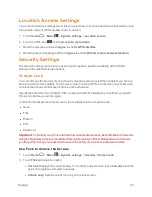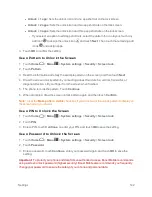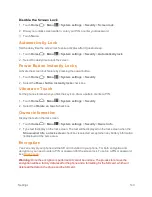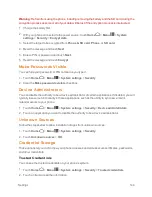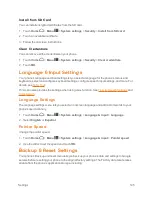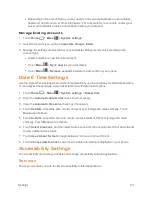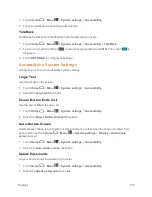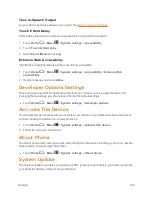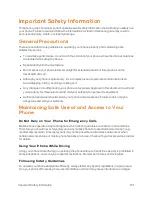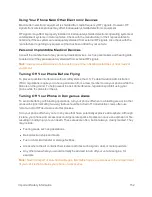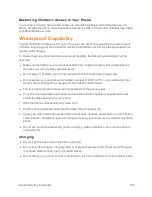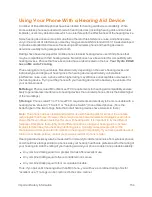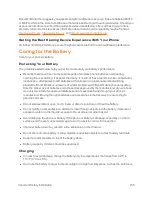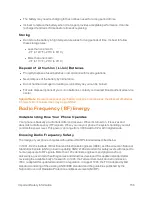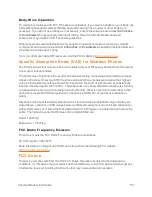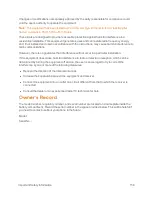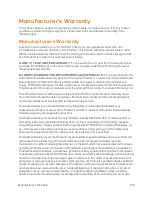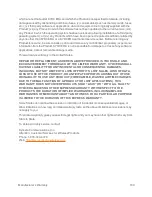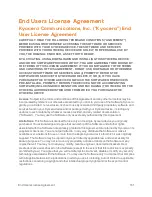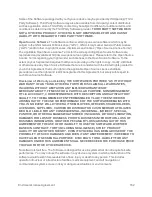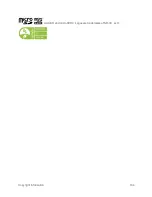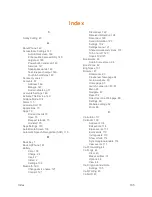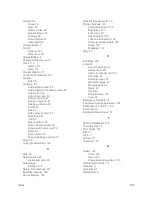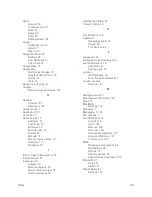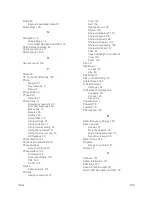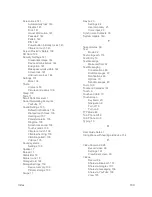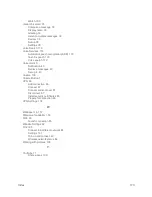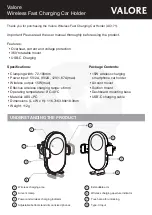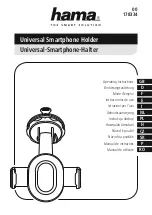
Important Safety Information
155
Boost Mobile further suggests you experiment with multiple phones (even those not labeled M3/T3
or M4/T4) while in the store to find the one that works best with your hearing aid device. Should you
experience interference or find the quality of service unsatisfactory after purchasing your phone,
promptly return it to the store. More information about hearing aid compatibility may be found at:
http://www.fcc.gov
,
http://www.fda.gov
, and
http://www.accesswireless.org
.
Getting the Best Hearing Device Experience With Your Phone
To further minimize interference, move the phone around to find the point with least interference.
Caring for the Battery
Care for your phone's battery.
Protecting Your Battery
The guidelines listed below help you get the most out of your battery’s performance.
n
Recently there have been some public reports of wireless phone batteries overheating,
catching fire or exploding. It appears that many, if not all, of these reports involve counterfeit or
inexpensive, aftermarket-brand batteries with unknown or questionable manufacturing
standards. Boost Mobile is not aware of similar problems with Boost Mobile phones resulting
from the proper use of batteries and accessories approved by the manufacturer of your phone.
Use only manufacturer-approved batteries and accessories found
through your phone’s
manufacturer. Buying the right batteries and accessories is the best way to ensure they’re
genuine and safe.
n
Do not disassemble or open, crush, bend or deform, puncture or shred the battery.
n
Do not modify or remanufacture, attempt to insert foreign objects into the battery, immerse or
expose to water or other liquids, expose to fire, explosion or other hazard.
n
Avoid dropping the phone or battery. If the phone or battery is dropped, especially on a hard
surface, and the user suspects damage, take it to a service center for inspection.
n
Improper battery use may result in a fire, explosion or other hazard.
n
Do not short-circuit a battery or allow metallic conductive objects to contact battery terminals.
n
Keep the metal contacts on top of the battery clean.
n
Battery usage by children should be supervised.
Charging
n
In order to avoid damage, charge the battery only in temperatures that range from 32°F to
113°F (0°C to 45°C).
n
Don’t use the battery charger in direct sunlight or in high humidity areas, such as the bathroom.

